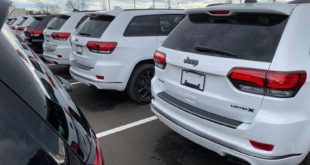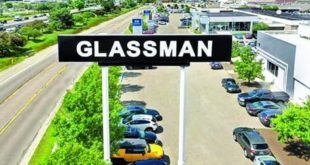
Aggressive incentives bolstered the new-vehicle market in May, dragging down the average interest rate on a loan to its lowest level since 2013, Edmunds said. But as the parade of finance deals marched through Memorial Day, fewer buyers took the bait.
The economic pressure caused by measures to slow the spread of the coronavirus, along with affordability concerns, inventory constraints and low consumer confidence curbed the typical seasonal bounce, according to Jessica Caldwell, Edmunds’ executive director of industry analysis.
“The deals started dropping as demand was picking up,” Caldwell said, adding that May’s final weekend was impacted by the protests sparked by the death of George Floyd in Minneapolis last week.
The average interest rate on new-car loans fell to 4 percent last month, compared with 6.1 percent in May 2019.
Though 0 percent interest, seven-year loans remain at near-record levels, the deals started to pull back last month, Edmunds noted. Such deals constituted 24 percent of all new financed vehicles last month, compared with 25.8 percent in April. Forty-seven percent of all financed vehicles were charged interest rates between 0 and 3 percent in May, up from 41.5 percent in April.
Another factor influencing lower average interest is fewer subprime buyers in the market, a possible indication of tighter lending standards. Subprime buyers made up 7 percent of retail sales for the week ending May 24, J.D. Power data suggests, down from pre-virus levels of 10 percent.
Edmunds doesn’t examine individual credit information, though Caldwell noted that new-car buyers with interest rates exceeding 10 percent dropped in May on a month-over-month and a year-over-year basis.
Access to credit tightened considerably during the 2008 financial crisis, and large lenders faced scrutiny over how they measured underwriting risks. Caldwell believes slower sales from low-credit borrowers may be the result of shoppers self-regulating and weighing their financial pictures before making a vehicle purchase.
As incentive promotions fade, forbearance periods wrap up and COVID-19 unemployment stimulus expires, dealerships have another sales barrier moving into what is typically the strongest selling months of the year: new-car inventory.
“The factory startups haven’t been going smoothly,” Caldwell said. “They have to plan a little bit more conservatively for the summer.”


